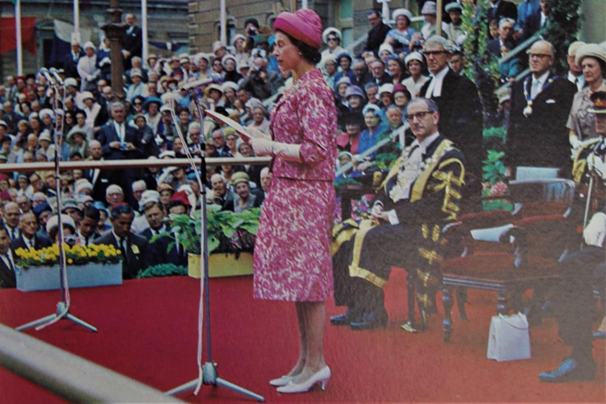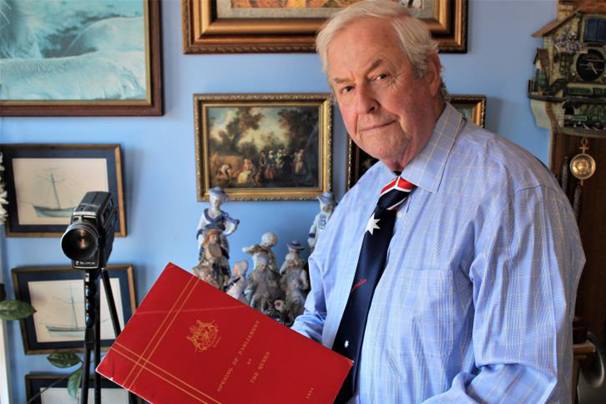Reg. A. Watson
It was more than a hundred years ago that our Tasmanian ANZACS came home. Home to Tasmania away from the hell of war. Home to recover and home to start their life again. It was hard to do.
What name should we give our particular Tasmanian ANZAC? Johnny is a good name, but his name varied as did his background and personality. And why did he go in the first place? No doubt there were various reasons….Patriotism? Duty and obligation? Social Pressure? A chance of adventure? Perhaps escaping from some problem that existed for him?
Whatever reason he left the security of his home and went to war. We tend to think that most of our ANZAC chaps were from the rural areas of Tasmania, but even in 1914 as is now, most lived in the cities, Hobart, Launceston, Burnie and Devonport. Their occupations were tram, bus and train drivers, bank clerks, sales assistants, factory workers, tradesmen and on a broader scale, farm labourers, fisherman, forest workers and deck hands. Officers were mainly professional people, clergymen, accountants, vets, chemists, doctors, and lawyers.
Johnny was young, not much more than a boy. He stood five feet eight inches tall. He had just begun shaving but his complexion was still fresh, but that would change. Perhaps he was one of the eleven who enlisted from Melton Mowbray in the Midlands. Or one of the sixty who enlisted from Gormanston or one of the eleven to enlist from Old Beach.
We can visualise Johnny on that fateful morning when he was to leave, packing his bag and maybe his dad was well off enough to own a car and take him to the train station. Before leaving he said goodbye to his family by hugging mum who had tears in her eyes, a manly handshake from dad, a kiss from his sisters and a handshake from his brothers, who were in awe of him. Mum wondered what the war had to do with ‘us’ while dad was proud of his son, now in uniform. Dad said he was brave which they also said at the community hall last night when the locals put on a supper to wish him God Speed and best wishes. There he said goodbye to his ‘girl’. Would they even see each other again? Yes, dad said he was “brave” but deep down he felt a foreboding, a longing in not wanting to really go. But he had signed, he was now in uniform, made his commitments and now he was to leave. Training would be first at Claremont then to be shipped to war. Funny though he did not feel brave, but he believed he was going to do what was expected of him.
Off he goes and sails the Indian Ocean to his destination. The transport ship was overcrowded and the trip was long. They spent their time in exercising, smoking, playing cards, gambling, boxing and in shooting practice. The meals were reasonable, but theft was rife. The officers had cabins and ate their meals separately. There were numerous cases of insubordination, of sickness, fighting and even one bloke jumped overboard never to be seen again.
Finally he was taken off the ship to undergo further training. Then to the battle zone where the real tests were to be experienced. Perhaps our Johnny first went to Gallipoli where he took ill with dysentery and after recovering was wounded in the shoulder by shrapnel. He was taken to one of the hospital ships where he met remarkable Tasmanian Matron, Elizabeth (Liz) Orr who had, after the war, a break down because of her service to our men.
If Johnny survived Gallipoli he would be sent to the Western Front and if he thought he saw the worse horror of war, he would see much more in France and Belgium. There perhaps he saw General John Gellibrand, Tasmania’s most decorated soldier; a brave, humane man who clashed with General Monash over the unnecessary casualties that were being caused.
The eucalyptus and the alluring paddocks of Tasmania were replaced for Johnny by mud holes so deep you could drown in them and a landscape because of incessant bombardments, similar to what the moon’s landscape must look like.. Men’s wounds and suffering would torment him in monstrous dreams for the rest of his life. He was to write home expressing his thoughts, but never letting them know the true story. After all, they would worry and he would not want that.
Yet somehow he survived it all…sick several times, wounded twice. On occasions he visited while on leave Paris as he did Old Blighty (England) and London. He had relatives in London so when there he looked them up they gave him a mighty reception. As an Australian he was a hero.
Then November 11th 1918 it was all over and to Tasmania Johnny would go. He did return to his home, but he felt a stranger to his parents and the boy they sent away now came back as a man and they were painfully aware he had suffered and saw much.
He was one of the lucky ones. Near 3000 Tasmanians died in the war and with a ratio of 1:3 nearly 9000 were wounded. All returned emotionally and psychologically effected. Johnny had repaired from his wounds, but many of his comrades came back without legs or arms, or both. Some came back with parts of their faces missing. Many coughed uncontrollably because of the gas attacks. Some were so bad mentally they were sent to the Derwent Valley Asylum to spend the rest of their days there.
Yes Johnny was lucky. He eventually married his ‘girl’ and had a family; only to see his son join once again for another war. More Banker’s wars.


